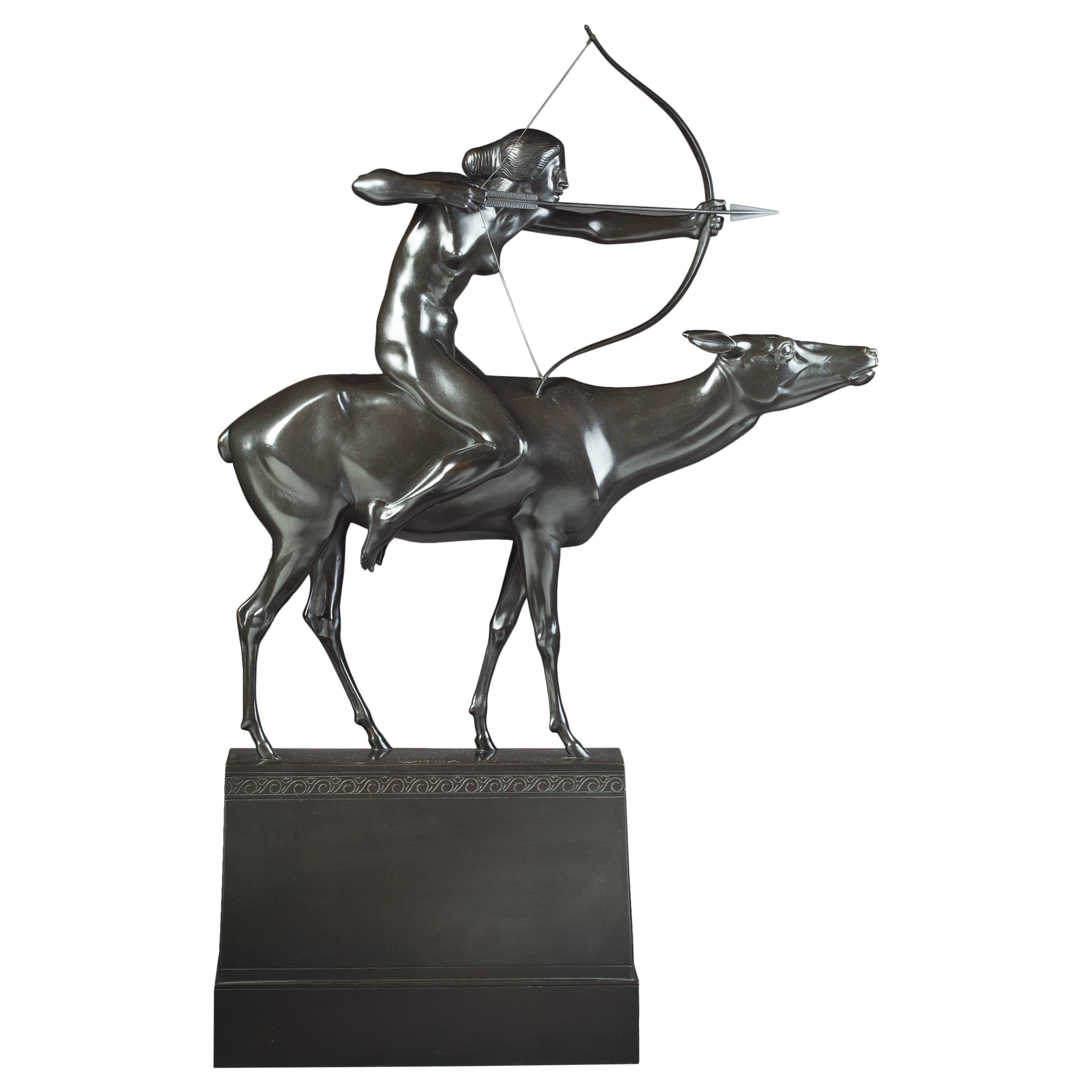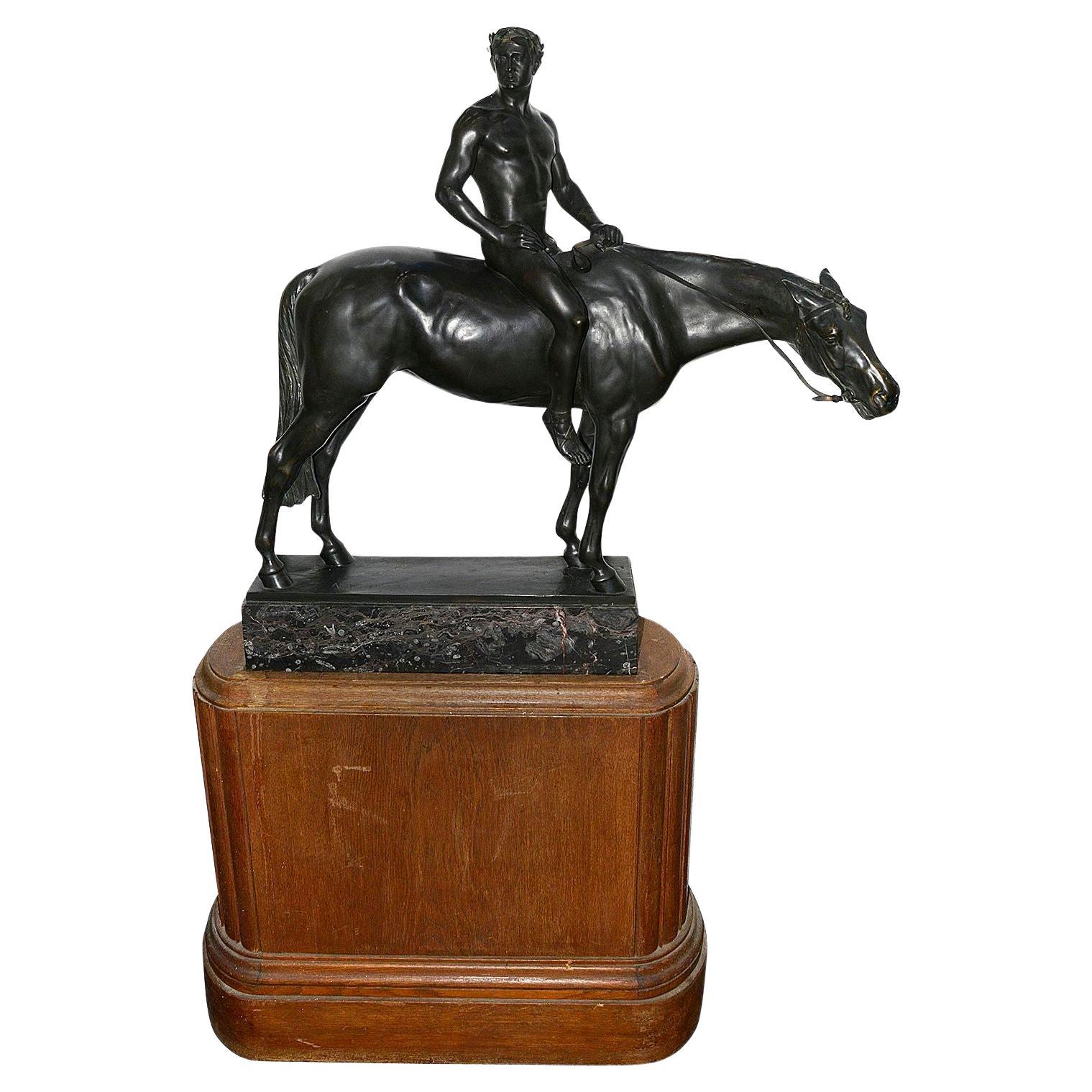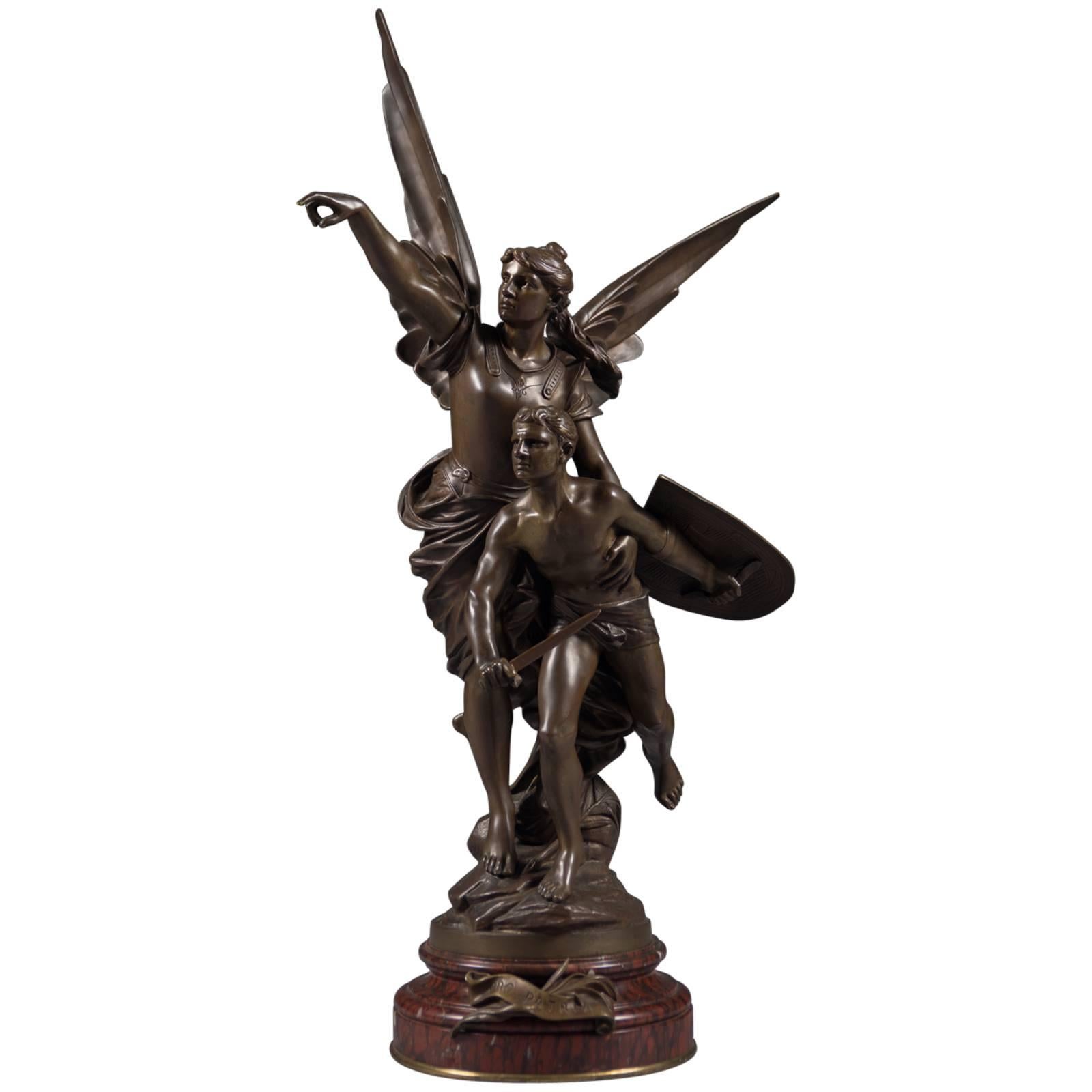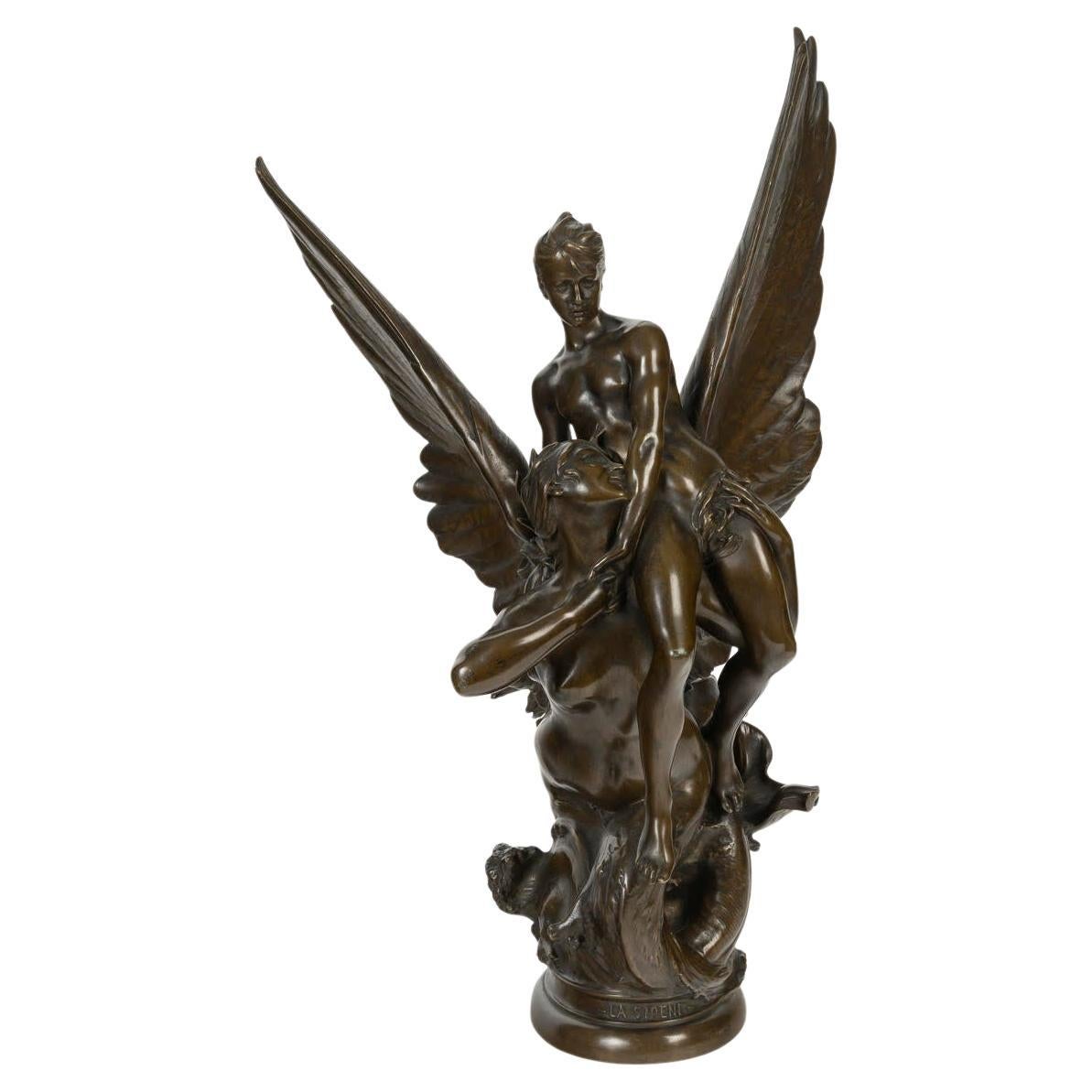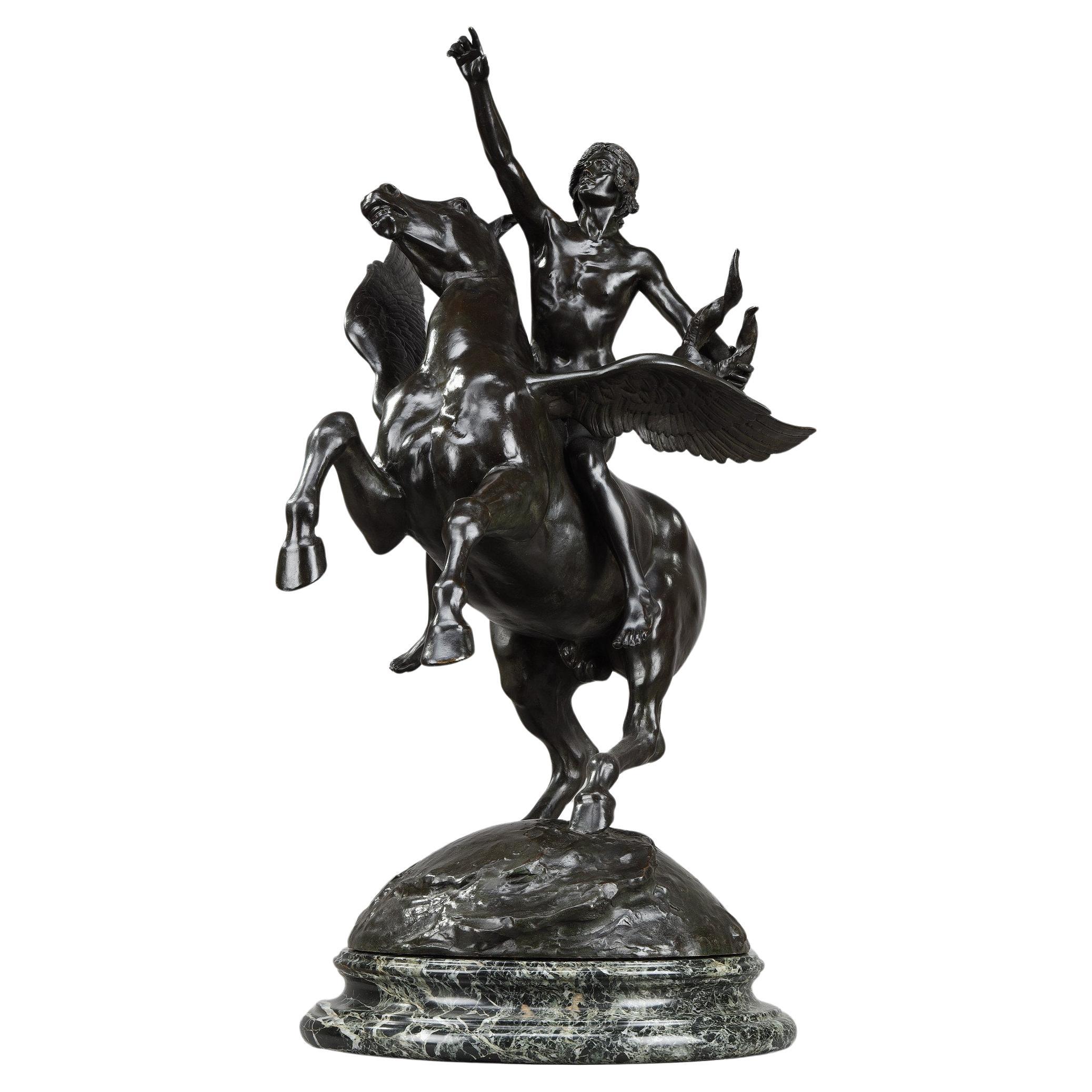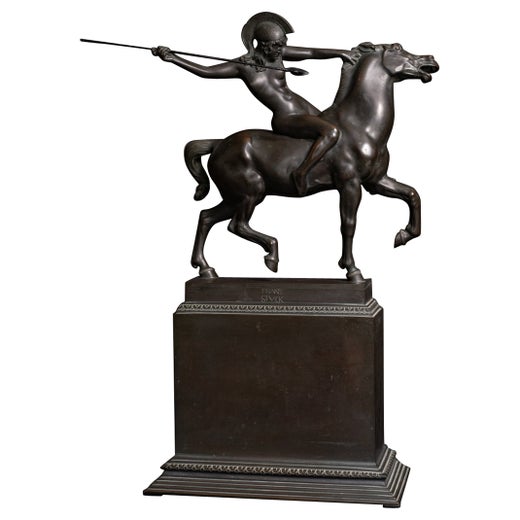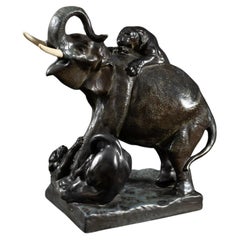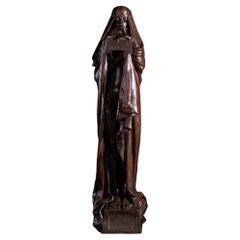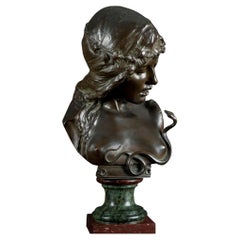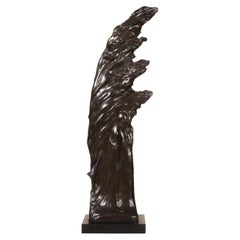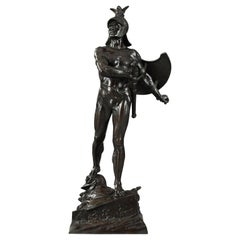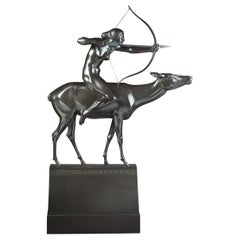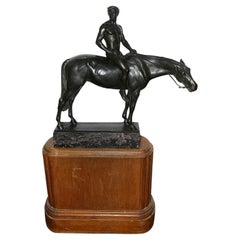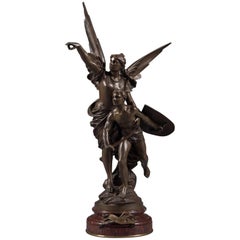Art Nouveau "Mounted Amazon" bronze sculpture by Franz von Stuck
About the Item
- Creator:Franz von Stuck (Artist)
- Dimensions:Height: 25.5 in (64.77 cm)Width: 17.75 in (45.09 cm)Depth: 6.75 in (17.15 cm)
- Style:Jugendstil (Of the Period)
- Materials and Techniques:Bronze,Patinated
- Place of Origin:
- Period:1900-1909
- Date of Manufacture:c. 1900
- Condition:
- Seller Location:Chicago, US
- Reference Number:1stDibs: LU7300238647122
Franz von Stuck
Franz von Stuck was a German artist of exceptional skills as a painter, sculptor, engraver, photographer, and draughtsman. He was born in Tettenweis, Germany, in 1863. He was a member-founder of the Munich Secession in 1893, and together with other artists, he was a forerunner of the Art Nouveau experience, called Jugendstil in Germany. Thanks to his style of formal perfection, sensuality and decadent sensitivity, he seduced the art world of half Europe. Von Stuck was particularly successful in Italy, to such an extent that he was granted a solo show at the Venice Biennial of 1909. His figurative repertory derived from classical art centaurs, fauns, nymphs drawn from antique mythology in the wake of a tradition inaugurated by Arnold Böcklin and was mediated through a fin-de-siècle sensibility towards eroticism and artfulness.
- ShippingRetrieving quote...Shipping from: Chicago, US
- Return Policy
More From This Seller
View AllAntique Early 1900s Austrian Art Nouveau Animal Sculptures
Earthenware
Antique 1890s French Art Nouveau Figurative Sculptures
Bronze
Antique Early 1900s Belgian Art Nouveau Figurative Sculptures
Onyx, Marble, Bronze
Antique Early 1900s French Art Nouveau Figurative Sculptures
Bronze
Antique Early 1900s French Art Nouveau Figurative Sculptures
Bronze
Antique Early 1900s Hungarian Art Nouveau Animal Sculptures
Earthenware, Porcelain
You May Also Like
Antique Late 19th Century Belgian Art Nouveau Figurative Sculptures
Bronze
Early 20th Century German Art Deco Animal Sculptures
Bronze
Early 20th Century German Art Deco Figurative Sculptures
Bronze
Antique Late 19th Century French Late Victorian Figurative Sculptures
Bronze
Antique 19th Century French Napoleon III Figurative Sculptures
Bronze
Antique 1880s French Renaissance Revival Figurative Sculptures
Bronze

